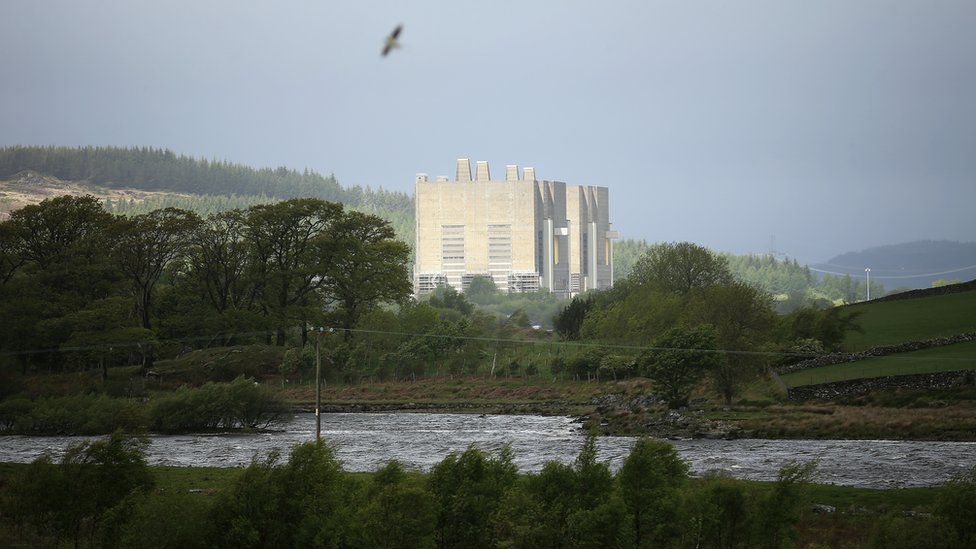FINANCIAL TIMES
From Richard Sonnenfeld, Professor of Physics, New Mexico Institute of Mining and Technology, Socorro, US
Comparing the press release from the Lawrence Livermore National Laboratory in California with your report (“US scientists boost clean power hopes with breakthrough in fusion energy”, December 12) one sees the release twice lists the value of the work to the US national nuclear stockpile programme before any mention of the “future of clean energy”. This is because Livermore’s National Ignition Facility (NIF) is funded primarily to maintain both the US nuclear stockpile and the critical scientists who understand the fusion physics behind it. While the reported energy break-even was long sought, it is not a breakthrough in the critical struggle against climate change. Livermore generated roughly 3 megajoules (MJ) of fusion energy from 2MJ of laser optical energy, an excess corresponding to about 0.3 kilowatt hours.
Unfortunately, the electrical energy expended to pump the lasers was 100-fold greater than the useful optical energy. Also, the firing rate at the NIF is roughly once per day. Were the NIF configured as a power plant, its “breakthrough” output could partially charge one electric vehicle in half a year. A glance at the sheer size and complexity of the NIF laser system clarifies that this is no scalable technology. The FT’s interest in the immense technical challenge of transition to a low carbon future is laudable, so please cover some of the newly built utility-scale wind and solar installations which are already cost competitive with existing coal plants.
There is a crying need for innovation in energy storage technologies, but the US could realise a 50 per cent renewable electric grid without significant scientific advances. Research on 100 per cent renewable power generation and storage on the global scale is well under way.
I am an advocate for hard science research and also count on the FT for solid business intelligence. While I also enjoy science fiction, I strongly encourage the FT to focus more on technology that is ready to fix the climate today.
Richard Sonnenfeld
Professor of Physics, New Mexico Institute of Mining and Technology, Socorro, USA
Commercial Nuclear Fusion May Still Be Decades Away
- Bloomberg Intelligence estimates that the fusion market will eventually be worth $40 trillion.
- U.S. scientists reported a major breakthrough in nuclear fusion last week.
- However, according to the director of the Lawrence Livermore National Laboratory, Kim Budil, it will take “probably decades” before nuclear fusion energy is commercialized.
U.S. scientists at the National Ignition Facility, part of the Lawrence Livermore National Laboratory (LLNL), announced a major breakthrough in nuclear fusion last week.
For the first time ever, scientists successfully produced more energy from a nuclear fusion experiment than the laser energy used to power it.
In the infographic below, Visual Capitalist's Mark Belan and Bruno Venditti describe nuclear fusion and illustrate how this discovery may pave the future for a new form of clean and sustainable energy.
What is Nuclear Fusion?
Nuclear fusion powers the Sun and the stars, where immense forces compress and heat hydrogen plasma to about 100 million degrees Celsius. At this temperature, the lighter particles fuse into helium, releasing enormous amounts of energy.
Nuclear fusion is a fairly clean energy source as it does not produce harmful atmospheric emissions and only produces a small amount of short-lived radioactive waste.
Scientists have been trying to replicate it on Earth for almost 70 years, using isotopes of hydrogen—deuterium and tritium—to power fusion plants.
Since deuterium is found in seawater and tritium is attained through irradiating lithium (a common element used in batteries), the accessibility of these isotopes means that fusion could become a major source of energy in the future.
The amount of deuterium present in one liter of water, for example, could produce as much fusion energy as the combustion of 300 liters of oil.
However, the real challenge is ensuring fusion power plants generate more energy than they consume.
The Challenge of Fusion Ignition
Fusion ignition is the term for a fusion reaction that becomes self-sustaining, in which the reaction creates more energy than it uses up. Up until now, scientists were only able to break even.
The National Ignition Facility used a special setup called inertial confinement fusion that involves bombarding a tiny pellet of hydrogen plasma with lasers to achieve fusion ignition.
LLNL’s experiment surpassed the fusion threshold by delivering 2.05 megajoules (MJ) of energy to the target, resulting in 3.15 MJ of fusion energy output, according to the U.S. Department of Energy.
Can Nuclear Fusion Energy Be Commercialized Soon?
In recent years, fusion technology has been attracting the attention of governments as well as private companies such as Chevron and Google. Bloomberg Intelligence estimates that the fusion market will eventually be worth $40 trillion.
Besides energy generation, fusion is expected to be used in other markets like space propulsion, marine propulsion, and medical and industrial heat.
However, according to the director of the Lawrence Livermore National Laboratory, Kim Budil, it will take “probably decades” before nuclear fusion energy is commercialized.
During the breakthrough announcement, she noted that it was necessary to produce “many many fusion ignition events per minute” as well as have a “robust system of drivers” before fusion can be commercialized successfully.
By Zerohedge.com
What Fracking Can Tell Us About the Future of Fusion
Analysis by Liam Denning | Bloomberg
December 27, 2022
A year in which energy markets were torn apart by our species’ long-standing habit of murdering one another ended with a hopeful scientific breakthrough. In the early hours of Dec. 5, researchers at Lawrence Livermore National Laboratory’s National Ignition Facility produced a nuclear fusion reaction that generated more energy than it took in from the lasers driving it.
Announcing this, Energy Secretary Jennifer Granholm hailed the NIF’s work as offering the potential to solve complex problems “like providing clean power to combat climate change.”
After a year like this one, she might have added “and stop us relying on the likes of Russia for energy once and for all.” Instead, she added: “and maintaining a nuclear deterrent without nuclear testing.” Because, apart from the unfortunately revived relevance of those words in 2022, that is what the NIF was set up to do after the end of underground testing of nuclear weapons. The achievement of “ignition” will doubtless inform continuing research into fusion energy, too, but the NIF’s technology wasn’t designed to that end. So-called tokamaks, like the (delayed) Iter project being built in France, operate differently and are viewed as a more likely path to commercial fusion energy becoming a reality.
We live in an era of energy breakthroughs that exist on a spectrum of varying degrees of reality. They are often hard to identify in real time. For example, in June 1998, an engineer working for Mitchell Energy & Development Corp. — now part of Devon Energy Corp. — successfully applied hydraulic fracturing to produce natural gas from a well in the Barnett shale basin near Dallas. That did not change things overnight; US gas production didn’t begin its resurgence for another decade, and the shale oil boom took several more years to get going. But in demonstrating that shale resources could be produced economically, it touched off a genuine revolution that upended energy markets, national economies and geopolitics. One small but topical example: The liquefied natural-gas tankers crossing the Atlantic today to help European countries cope with Russian gas cutoffs can trace their launch all the way back to the S.H. Griffin Estate No. 4 well in Texas.
There have been other energy breakthroughs in our lifetime. Australian scientist Martin Green’s innovative PERC cell architecture in the 1980s improved the efficiency of solar panels significantly, making possible their eventual breakout from niche industrial applications to humdrum household rooftops.(1) Similarly, the development of the rechargeable lithium-ion battery by scientists at Exxon Mobil Corp. (!) in the 1970s paved the way for electric vehicles, grid-sized energy storage and the device on which you are most likely reading this.
As different as they are, these revolutions share some things in common. They represented engineering refinements of existing technologies and processes as opposed to the bliding flash we tend to think of. This does not take away from their genius; even the successful fusion ignition just witnessed resulted from endless iteration and will now inspire more of the same.
Rather, it is to emphasize that progress in energy tends to be iterative. Fracking had been around for decades before that fateful well; Soviet engineers had even tried doing it with nuclear weapons (reader, they were unsuccessful). Mitchell Energy’s dogged commitment to making it work — rather than inventing it per se — is now the stuff of legend in shale circles. Similarly, solar and battery breakthroughs reconfigured existing technologies with new designs and chemistries, yielding transformational results. Eventually.
That latency is another thing they share in common. All required a confluence of other factors to ascend to being true breakthroughs. The shale revolution required, among other things: sophisticated energy futures markets, perhaps somewhat less sophisticated investors willing to fund excessive drilling, an earlier bubble in gas-fired power plant construction and an existing ecosystem of US hydrocarbon production. Attempts to replicate fracking’s success elsewhere have been patchy, most notably in Europe, demonstrating that discovery is only part of the battle and not necessarily transferable. With solar and batteries, one could argue the advances made in materials only had the impact they did because of another “breakthrough”: Germany’s enactment of generous renewable energy subsidies from 2000 onward spurring Chinese manufacturers to scale up production and reduce costs drastically.
The last sudden energy breakthrough involving a genuinely new form was fusion’s little sibling, fission. Today’s hopes of abundant, cheap power from banging atomic nuclei together echo similar optimism about splitting them in the 1950s and 1960s. Yet here we are 65 years after the first commercial reactor switched on, still debating how much of a future this once-vaunted energy of the future truly has. Ironically, here in the US, the hopeful side of that debate centers on small modular reactors or, put another way, refinement of the existing technology.
If this all sounds like a bit of a downer heading into the new year, it shouldn’t. Consider that we have made great strides in extending access to reliable energy, using shale gas to replace coal-fired power — and constrain Moscow’s power — and deploying renewable sources at ever faster rates. Even if Tesla Inc. is closing out the year with its stock seemingly in free fall, electric vehicles are now the source of all growth in the global auto business. And all of this is happening less because of some quantum leap but instead reasonably steady progress on familiar fronts: manufacturing efficiency, financial backing, political will. There remains huge untapped potential in our existing technologies, be it redesigning electricity tariffs to encourage smarter consumption, upgrading building codes to require better insulation and heat pumps or — more advanced but quite feasible — utilizing the batteries in parked EVs as grid resources.
Besides fusion, there is great excitement around other transformational energy sources and related technologies, such as hydrogen and direct-air carbon capture. Hydrogen isn’t new, of course; rather, it is the concept of producing that gas without emissions and using it to replace coal and natural gas that has people excited. While hydrogen certainly looks as if it will be useful where electrification isn’t, such as in high-temperature industrial processes, the current hype looks overdone. For example, visions of fleets of specialized tankers shipping the stuff around the globe run into the reality of hydrogen’s inherent lightness — meaning lots of expensive voyages needed — as Bloomberg NEF founder Michael Liebreich lays out here.
One thing all these mooted silver bullets have in common is timing, with advocates expecting them to be the next big things by mid-century, coinciding with many countries’ net-zero emissions targets. Yet they are all competing essentially for the same thing. For example, if fusion power became cheap and ubiquitous, the addressable market for hydrogen and carbon capture of any kind shrinks enormously. Similarly, if carbon capture ends up working well and economically, just use natural gas, which is far easier than hydrogen to handle and transport.
Meanwhile, in the background, we’ll have been collectively tinkering with renewables, batteries and other iterations of all the existing clean tech for a few more decades. There’s a decent chance that some of the energy of tomorrow gets stranded the day it arrives
(1) PERC stands for Passivated Emitter and Rear Cell. This design improves the top and rear side of a silicon solar cell in order to keep electrons moving freely for longer, thereby generating electricity more efficiently.
This column does not necessarily reflect the opinion of the editorial board or Bloomberg LP and its owners.
Liam Denning is a Bloomberg Opinion columnist covering energy and commodities. A former investment banker, he was editor of the Wall Street Journal’s Heard on the Street column and a reporter for the Financial Times’s Lex column.
©2022 Bloomberg L.P.








